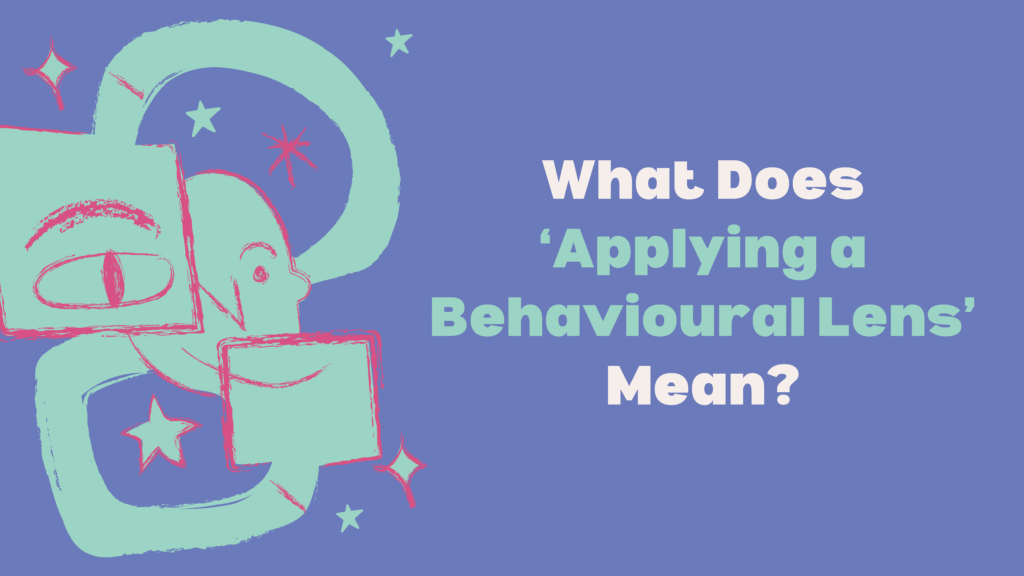We care about your privacy

Going into a full-blown behavioural science process is not always feasible for teams. In fact, it is not always necessarily advisable. A good first step is to review current systems and processes through a behavioural lens first. But what does it mean to ‘apply a behavioural lens’? What does that look like in practice? And how can you help your team do it well?
Applying a behavioural lens is not about adding a behavioural checklist to your next project. It’s about changing how your team sees problems and designs solutions, shifting from what we want people to do to why people do what they do.
Success in applying behavioural starts with the mindsets your organisation cultivates. Below are five that can help you make a great start.
Many programme teams are made up of specialists (e.g. health experts, educators, agronomists, communicators). But most of us were not trained to understand human behaviour as part of our training.
Applying a behavioural lens means borrowing from other fields like social psychology, anthropology, and behavioural economics to understand what’s really driving (or blocking) action.
For example, if your goal is to increase the use of improved seed varieties, distributing them may not be enough. You’ll also need to understand farmers’ beliefs about risk, social norms in their communities, and whether they’ve seen trusted peers benefit from similar changes. That’s where a behavioural perspective adds value. It fills the human gap in technical solutions.
It’s easy to think that behavioural design (mapping determinants, identifying barriers, matching tactics) will box creativity in. In reality, it does the opposite.
Once your team sees behaviour in its component parts (what people need to do, what stops them, what could help), new insights emerge. Instead of designing around broad goals like ‘increase contraceptive use’ your team might reframe the challenge to “how can we help young women negotiate condom use with confidence?”
Behavioural thinking focuses creativity.
Many organisations avoid testing new ideas because failure feels costly. Fear-of-finding-out (FOFO) is real. This is understandably more the case in social impact work, where lives and livelihoods are at stake.
But adopting a behavioural lens also means adopting an experimental mindset. Rather than rolling out large-scale interventions based on assumptions, test smaller prototypes first. A pilot that doesn’t fails still gives you valuable data on what doesn’t motivate people or what’s not feasible in context. The key is to create a culture where small, intentional failures are celebrated as evidence, not setbacks.
Human behaviour is dynamic, and so are the systems that shape it. Applying a behavioural lens means accepting that your strategies must evolve as you learn.
Behavioural projects often have ripple effects, some intended, others not. Keeping your strategy flexible and evidence-informed allows your organisation to adapt quickly, rather than staying tied to outdated assumptions or rigid plans.
Behavioural insights thrive in open, learning-oriented cultures. Encourage your team to discuss what they’re trying, what’s working, and what’s not. Exchange lessons across departments or countries.
External sharing matters too. When organisations document and publish their behavioural design experiences, they help the field mature. Look at how initiatives like Breakthrough ACTION have built collective learning by making behavioural design resources publicly available. That’s the kind of knowledge sharing that accelerates progress.
Applying a behavioural lens is a mindset. It means viewing problems through the realities of human decision-making and designing with empathy, evidence, and experimentation.
For programme and team leaders, the best place to start is with your own teams: build curiosity, create safe spaces to test and learn, and make behavioural approaches part of how you work every day.
How is your organisation building behavioural thinking into its work? I’d love to hear your experiences.
I published a slightly different version of this blog in 2021.
—
👉🏾 How skilled are you at designing for change? Start with the FREE assessment: https://lnkd.in/dK7YPKgR
👉🏾 Join my mailing list for exclusive insights and content! subscribepage.io/rUxP5k